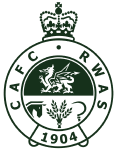The Royal Welsh Agricultural Society has played a leading role in the development of agriculture and the rural economy in Wales for over a century, since its formation in 1904.
Today our work includes providing support for business, social welfare and education in rural communities, and the organisation and staging of our ever-popular society events; the Smallholding and Countryside Festival, the Royal Welsh Show and the Winter Fair.
SMALLHOLDING AND COUNTRYSIDE FESTIVAL
Royal Welsh Showground, Llanelwedd, Builth Wells, Powys. LD2 3SY
We look forward to seeing you at the next Smallholding & Countryside Festival on 18th & 19th May 2024.
ROYAL WELSH SHOW
Royal Welsh Showground, Llanelwedd, Builth Wells, Powys. LD2 3SY
We look forward to seeing you at the Royal Welsh Show from 22nd – 25th July 2024.
ROYAL WELSH WINTER FAIR
Royal Welsh Showground, Llanelwedd, Builth Wells, Powys. LD2 3SY
We look forward to seeing you at the next Winter Fair on 25th and 26th November 2024.
SHOWGROUND
The 150 acre Royal Welsh Showground is open all year round. We host an array of exciting events set against the spectacular views of the Welsh countryside.
The Showground boasts many different venues catering for a variety of occasions such as weddings, business meetings, conferences, concerts, exhibitions and much more.
The Royal Welsh Agricultural Society has played a leading role in the development of agriculture and the rural economy in Wales for over a century, since its formation in 1904.
Today our work includes providing support for business, social welfare and education in rural communities, and the organisation and staging of our ever-popular society events; the Smallholding and Countryside Festival, the Royal Welsh Show and the Winter Fair.
History of the Royal Welsh Agricultural Society
The Royal Welsh Agricultural Society was established originally as the Welsh National Agricultural Society in 1904. The first general meeting of founders and supporters, attended by 20 prominent figures from Wales, took place in Committee Room Twelve of the House of Commons in London. They passed a number of rules on the society’s constitution and decreed that its aims should be to improve the breeding of stock and encourage agriculture throughout Wales.
It is a tribute to those early pioneers, and others who followed, that these aims have been achieved. Welsh livestock lead the world and agriculture in Wales has, through skill and endeavour, survived many of the challenges faced by the farming industry in the intervening years, and the Royal Welsh Agricultural Society has been at the centre of agricultural progress in Wales during all of that time.
Today, the society is a national institution loved throughout Wales and beyond, not only by farmers and the rural community but by people from all walks of life, many of whom have come to regard the Royal Welsh Show as the highlight of their year.
It has not always been so. The society’s beginnings were punctuated by problems and disagreements and sometimes even downright hostility from a range of determined opponents and factions with differing and strongly held views on many issues. However, these initial skirmishes were eventually overcome and the society survived and developed during its embryonic years at Aberystwyth, where the first show was held in August 1904 under the presidency of the Earl of Powys, and then through its migratory existence in the first half of the last century when the show moved to 37 different locations alternating between North and South Wales.
Often dogged by financial difficulties, created mainly by the expense of moving from one show site to another, it was not until the Royal Welsh settled on its present site at Llanelwedd, Builth Wells, in 1963, that financially and otherwise matters began to take a more permanent turn for the better. Even then its position remained precarious and some challenging decisions had to be taken during the early years at Llanelwedd to keep the society afloat.
The first show at Aberystwyth attracted 442 livestock entries. Four years later, in 1908, 23 special trains comprising 224 cattle trucks and horse-boxes arrived at Aberystwyth together with 100 passenger coaches ferrying visitors from far and wide to the show.

Nowadays, livestock entries number around 8,000 and 20,000 cars a day plus hundreds of stock lorries and trailers converge on the showground in Mid Wales for the annual four-day event which has grown into one of the most popular agricultural shows in Britain.
The success of the Royal Welsh Show has spawned two other great events – the Winter Fair which was founded in 1990, and the Smallholder and Garden Festival which made its debut on the showground in 2003, which is now called the Smallholding and Countryside Festival. Both have grown rapidly in stature and importance and are among the most popular attractions in Wales.
Today, the role of the modern Royal Welsh Show is a rounded one. As well as its principal function of showcasing the cream of Welsh livestock and the high quality food and drink produced in Wales, it encompasses the wider spectrum of farming and rural life and successfully bridges the gap between town and country. It provides something to interest everyone through its kaleidoscopic range of activities including forestry, horticulture, crafts, countryside sports, and a 12-hour programme of exciting entertainment that continues throughout each of the four days of the event.
Not only is the event enjoyed by the thousands of competitors, exhibitors and visitors who attend year on year, it is also becoming an important place to conduct business and discuss politics. With scores of dignitaries and high-profile decision makers coming together, the show provides an international platform to facilitate discussions affecting the future of Welsh agriculture and the rural economy between some very influential individuals and organisations.
